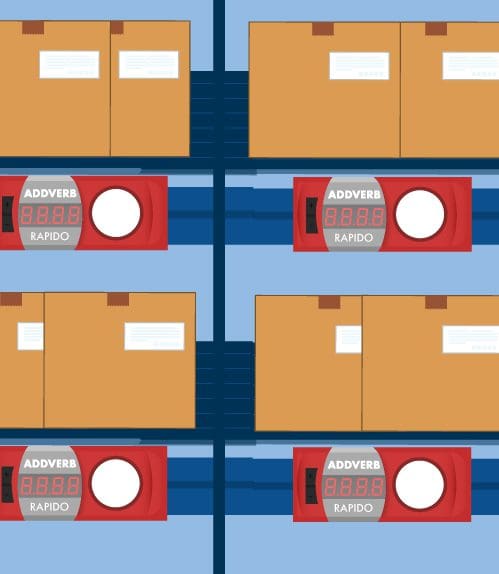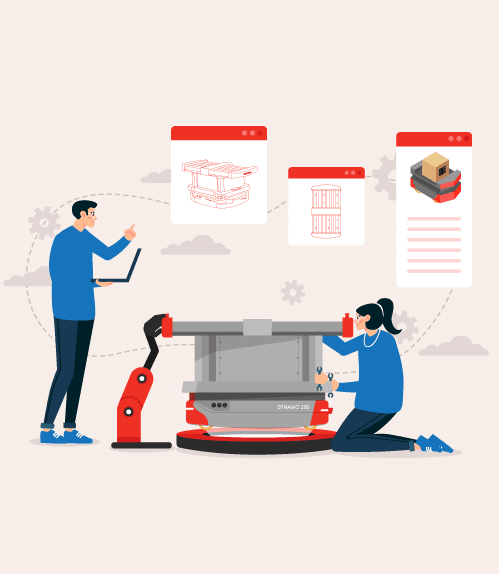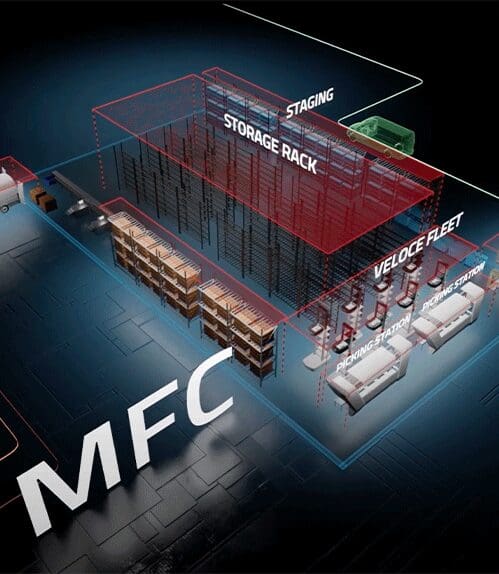With the rise of E-commerce, the proliferation of SKUs and the expectation of quick deliveries, the intralogistics operations have become quite complex. To cater to today’s customer, both the online and the brick and mortar retailers must maintain an adequate supply of items both in terms of quantity and variability. These competitive pressures prompt companies to have super-fast and highly accurate deliveries, which becomes a daunting task for the warehousing team. To cater to these high service levels and still maintain both the scale and flexibility in their operations, Warehouse Managers should look towards efficient and accurate order fulfillment solutions. One such solution that ticks the right boxes is a Put-To-Wall solution, which can help in sorting the orders that have been consolidated upstream into individual deliveries before they get dispatched.
What is Put-To-Wall?
Put-To-Wall system is a part of the Goods-To-Person order picking system. This solution mainly comprises of a shelf with individual slots, each slot representing an order. Both sides of the slots are open to facilitate sorting of the orders at one side & collection for the packing on the other side. The Put-To-Wall systems are usually combined with the “Wave Picking” process. All the orders that are to be picked are consolidated and processed as a single collective order. The picker collects the items in a tote/crate and sends the crate downstream towards the sortation region which comprises multiple Put-To-Wall stations.
How it is used?
A Wave is generated by combining the common SKUs, delivery dates, shipping address areas, etc. These multiple orders combined are processed together & the individual SKUs for those combined orders are picked in the crates and sent to the sortation area. The operator in the Put-To-Wall area typically has an RF gun which is integrated with the wall.
Once the crates from upstream arrive in the Put-To-Wall area, the incoming inventory is scanned at the item level/case level. In case of item level placing, once the item is scanned, the required slot of the Put-To-Wall, where it needs to go illuminates; in case of ‘case level scanning’, all the locations where the items in the case should go illuminate with the quantity getting displayed on the alphanumeric display of the light unit. Upon placing the items into the locations, the operator puts off the light by pressing the acknowledgment button.
On the Packing side of the put-wall, another operator packs the orders. The totes/cartons with the consolidated items from upstream are usually carried to the Put-To-Wall station through a conveyor, loop sorter or in some cases by a trolley.
Advantages of Put-To-Wall:
High Throughput:
Wave picking typically reduces the walking time of the picker as walking comprises 50% of the order picking time. This results in a higher-order picking rate and subsequently the Put-To-Wall allows for a very fast and quick sortation.
Flexibility:
The Put-To-Wall structures can be expanded/contracted by increasing the number of shelves & lighting systems to suit the demand fluctuations. Put-To-Wall can be very easily integrated into the existing system without any alterations. It is just an add-on at the end of the order processing line which results in easy, efficient & accurate order handling.
Increase employee productivity:
As employees standing at one point & sorting the orders, it reduces the travel time and offers a safer and ergonomic work environment. It is easy to train the employees to use a put-wall system that results in higher productivity.
Higher accuracy:
The Put-To-Wall system involves scanning the items before placing them into the respective slots. The scanning, subsequent light, and alphanumeric display ensures high-quality checks reducing the misplacing of items, quantity errors & increases order accuracy rates.
Efficient Space Utilization:
The Put-To-Wall structure has many slots on one shelve and the slots are continuously used for order processing and packing leading to the effective utilization of warehouse space.
Environment-friendly:
Put-To-Wall is completely paperless, as it involves scanning & light, which makes it environment-friendly & has less scope for errors.








